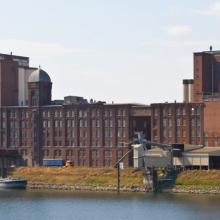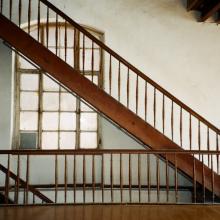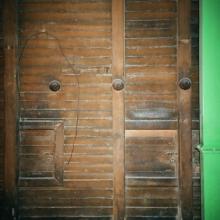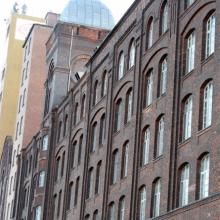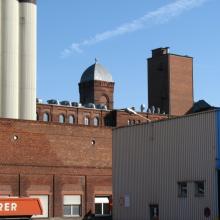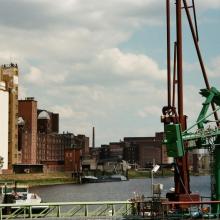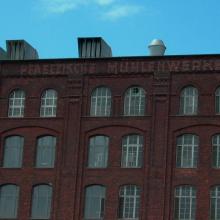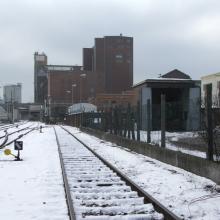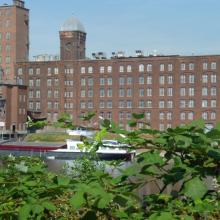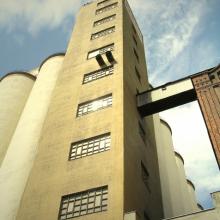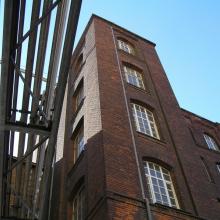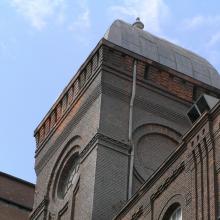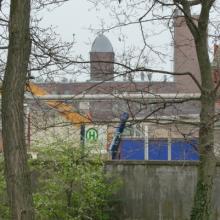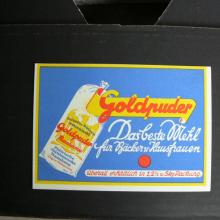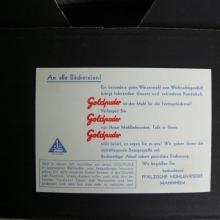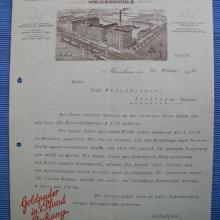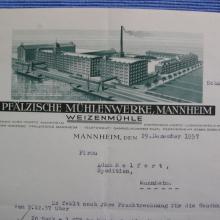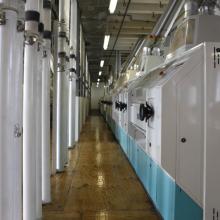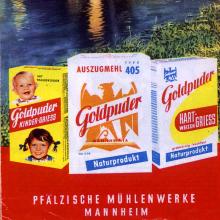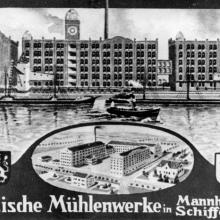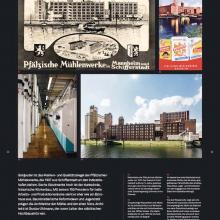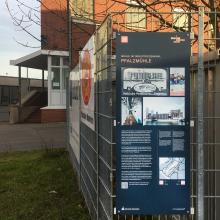Pfalzmühle Mannheim
Die Pfalzmühle liegt am Ufer des Bonadieshafens im südlichen Teil der Friesenheimer Insel Mannheims. Sie ist ein Industriedenkmal, ganz im Sinne baukünstlerischer Reformbestrebungen des beginnenden 20. Jahrhunderts mit Elementen des Jugendstils in Klinkerbauweise.
Weizenmühle
Weizen-, Durum- und Roggenmühle zur Herstellung von Mehlen für Handwerks- und Industriebetriebe des Backgewerbes sowie Gries für die Teigwarenherstellung. Seit 1915 ist GOLDPUDER das Marken- und Qualitätssiegel.
1898 Gründung der AG Pfälzische Mühlenwerke in Schifferstadt. Der Standort wurde durch die Gründung von Großmühlen an Wasserstraßen unrentabel, deshalb wurde der Sitz mit einem Neubau ab Oktober 1907 nach Mannheim verlegt; Inbetriebnahme 1909. 1912 wurde die Mühle in Schifferstadt stillgelegt und 1918 unter der Bedingung veräußert, dass hier keine Müllerei mehr betrieben wird. Die Vermahlungskapazitäten konnten dank der neuesten Müllereimaschinen und Lagerungsmöglichkeiten schnell erhöht werden. Die Pfalzmühle entwickelte sich zu "einer der größten und modernsten Großmühlenbetriebe in Deutschland" - so die Mannheimer Stadtreklame 1928. Zu dieser Zeit wurden 170 Arbeiter und 46 Beamte (!) beschäftigt. In diesen Jahren beteiligte sie sich finanziell maßgeblich an anderen Mannheimer Mühlen, so z.B. an den bis 1944 existierenden Rheinmühlenwerken am Rheinkai und an der Kauffmannmühle. Die Leitung wurde in Personalunion betrieben.
Lange Jahre war die Mühle im Besitz der Werhahn-Mühlen, bis sie 2014 an die Bindewald-Gutting-Mühlengruppe verkauft wurde. Seither wird hier kein Mehl mehr vermahlen.
- Führer durch die Industrie- u. Hafenanlagen von Mannheim, Rheinau und Ludwigshafen; hrsg. von der „Rhein“- Verlags-Gesellschaft m.b.H., Duisburg-Ruhrort, 1909
- Mannheimer Stadtreklame (Hrsg.), Mannheim
- Das Kultur- und Wirtschaftszentrum Südwestdeutschlands, 1928 Andreas Schenk, Architekturführer Mannheim, Hrsg. Stadt Mannheim, 1999
- Hanspeter Rings, Mannheim auf Kurs - Hafen- und Schifffahrtsgeschichte der Stadt an Rhein und Neckar, 2003
- Stadtarchiv Mannheim und Mannheimer Architektur- und Bauarchiv e.V., Mannheim und seine Bauten 1907-2007, Bd. 4
- Andreas Schenk, Bauten für Verkehr, Industrie, Gesundheit und Sport, 2004 Der Brockhaus Mannheim, Leipzig - Mannheim, 2006
Zwei 6-geschossige Gebäude, ein querstehendes Silo und der Wasserturm am Kanal, Verwaltungs-, technische- und Sozialgebäude an den Straßenseiten, altes Kesselhaus im Hof.










